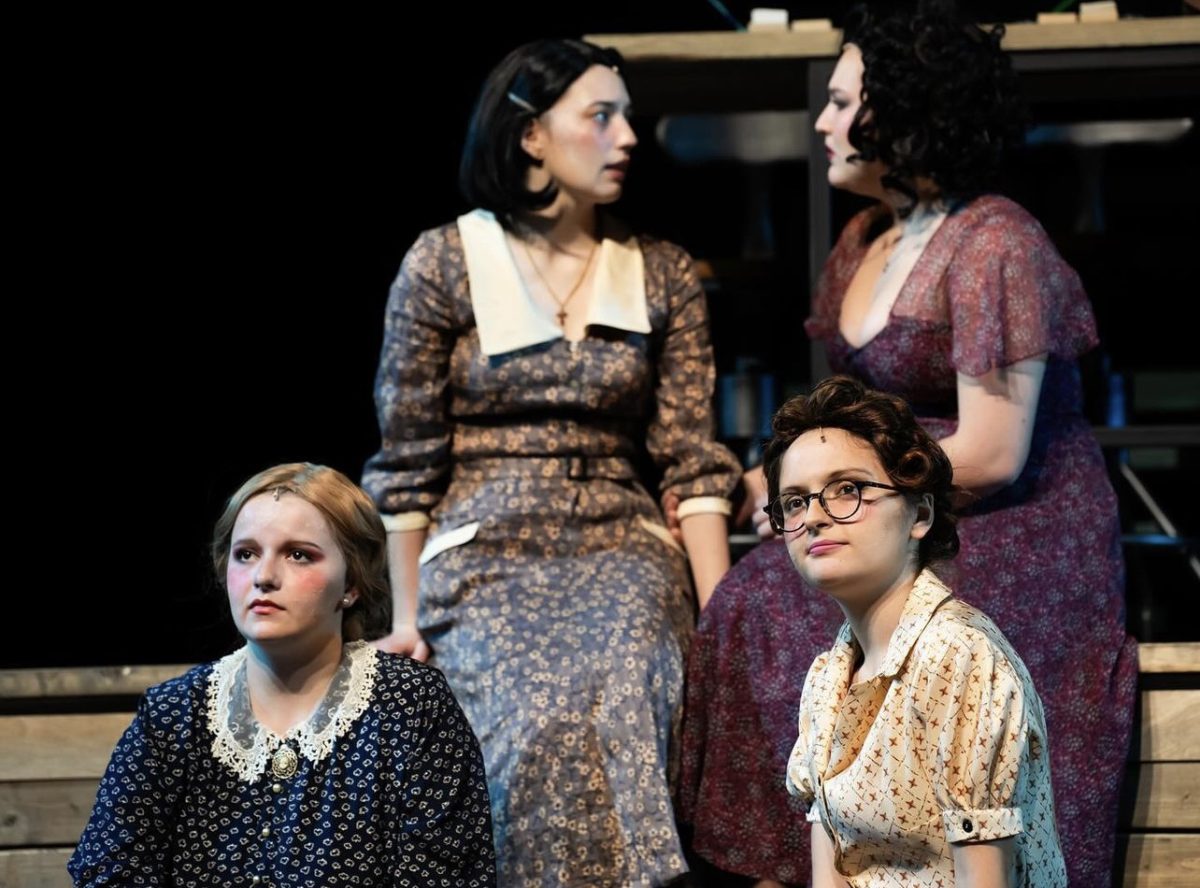During the early 20th century, the silvery and radioactive metal radium was in great demand across the globe. The alkaline metal, known for its’ glowing properties, was used to paint the faces of watch dials that were highly sought after by soldiers at the time.
While painting the numbers, “radium girls” would put the brush tip to their lips in order to get a fine point, completely unaware of the poison they were ingesting. Over time, the young women began developing severe health complications that were dismissed and neglected by their employers. After nearly two decades of this, women took the issue to court, leading to the creation of new laws to protect workers.
“These Shining Lives” follows the story of four fictional women who work for the Radium Dial Company: Charlotte, Francis, Pearl and Catherine.
When the lights come up, Catherine, played by sophomore Elysia Johnson, begins to set the seemingly optimistic yet tragic tone of the play.
From the start, Johnson’s performance is as heartfelt as it is moving. She captures the audience with her infectious spirit and girlish nature.
The story follows Catherine as she begins her new job and starts earning her own wage as a young woman in 1922. Her husband, Tom, played charmingly by freshman Ethan Rogers, fully supports her decision and helps tend to their children while his wife is away, a progressive notion considering the time period.
At Radium Dial, Catherine forms a close friendship with her female coworkers that later turns into a shared bond over their declining health. The sisterhood the women form over the course of the show is as evident onstage as it is offstage.
Sophomore Chloe Butts, who played the promiscuous but sensitive Charlotte, delivered a standout performance night after night.
“It’s a story that’s important and needs to be heard,” Butts said. “Getting to play someone that’s real and that you have to honor while playing, it adds a whole new challenge.”
The stunning set design, by scenic designer Patrick Hamilton, and genius use of lighting with projections, by lighting designers Beate Czogalla and Harper Fulmer, truly complete the show. The one-piece set allows the actors to move fluidly between scenes without major blackouts and set changes while also showcasing power dynamics. During pivotal moments of the play, images of authentic newspaper clippings can be seen in the background, adding to the intensity and surrealness of the moment.
In the very last scene, the four females are present on stage as Catherine gives a final monologue recognizing the real women who endured the unthinkable conditions of radium poisoning. As each woman is named, a photograph of the real-life woman is projected on screen. The moment left me teary-eyed and speechless, as I came to the realization that this is not just a fictional story. These were actual women who were stripped away from their families, children, time and unfinished lives.
“Clearly the story is still relevant because there’s still issues of corporate greed and negligence happening in the workplace,” said Eric Griffis, the director and costume designer of the show. “Knowing our history and what came before can help us prevent it from happening again.”
“These Shining Lives” was originally published in 2010, nearly 15 years ago. At present, multiple other institutions across Georgia and beyond are including this play in their current theatre season. With the conversation of workers’ rights being at the forefront in recent times, from the writers’ strike and auto workers’ strike, it is safe to assume this decision is a direct reflection of today’s society, whether consciously or subconsciously.
The GC theatre department and cast and crew of “These Shining Lives” deserve an endless applause for their beautiful, important and timeless work.


